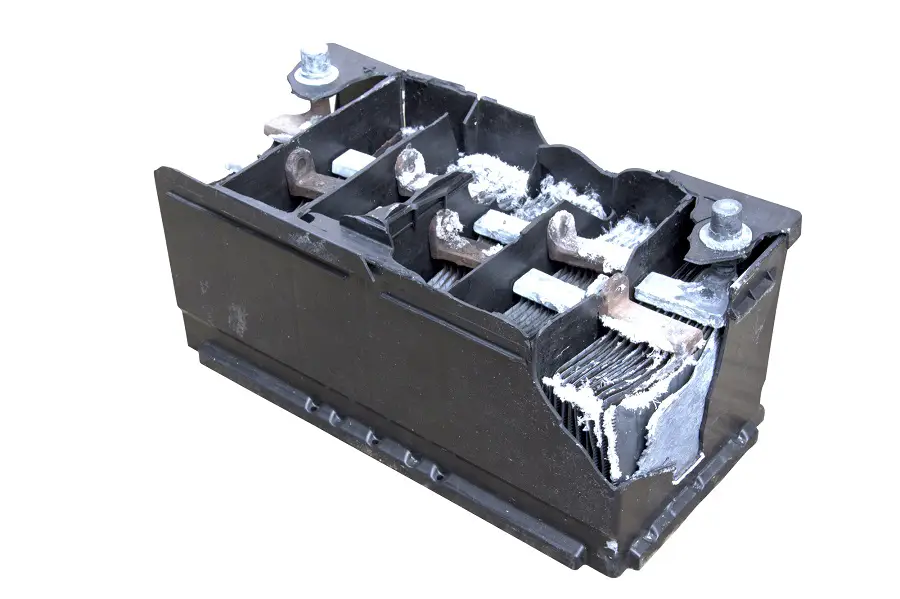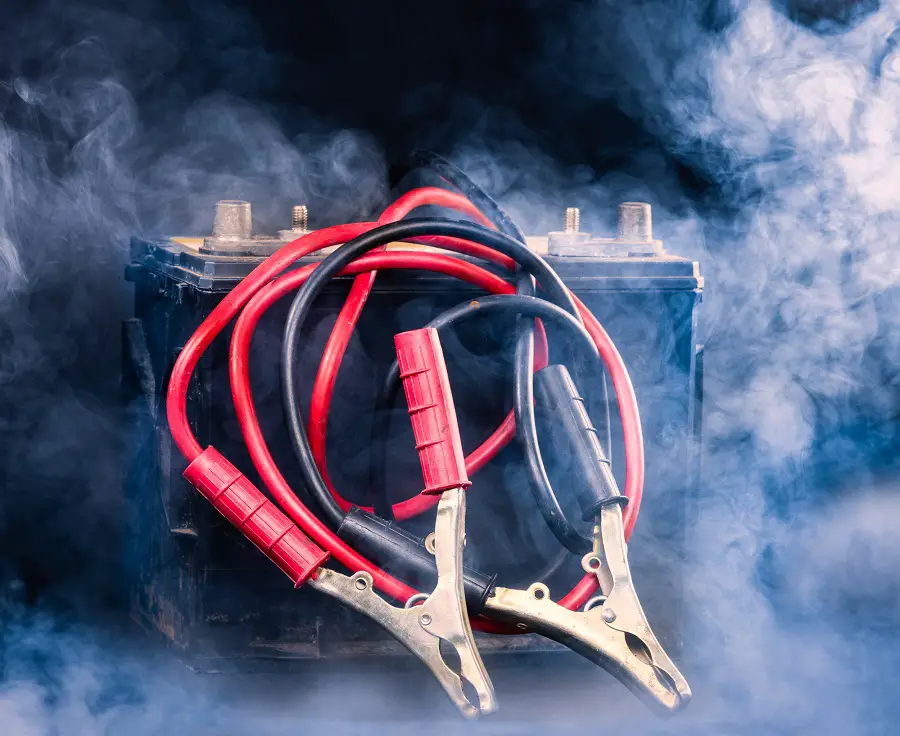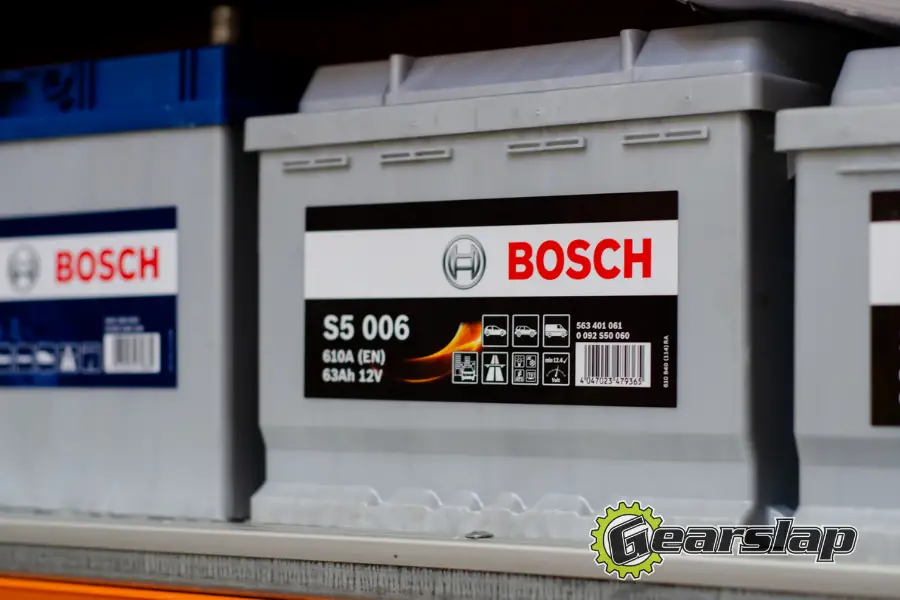Pallets of used batteries.
That’s one of the main things I remember about working at a retail auto parts store. We would get multiple “cores” back each day and we would stack them, as best we could, on a pallet outside.
The pallet was mostly batteries but occasionally we’d toss a broken water pump, burned-out window motor or some broken, obscure engine part onto the pile.
Why didn’t we just toss them in the dumpster? And why were people bringing them back to us in the first place? Were we in charge of getting rid of their unwanted, and unusable, trash?
Not exactly. The pallets would be wrapped every week and loaded onto a truck which would take them to a distribution center for sorting and returning.
That’s how the core system works. But what is a core, why is there a charge for it and why do they exist?
A core charge is a fee that acts as a “ransom” for your old parts. The charge is used to ensure that you bring the old item back. These old items are then restored, remanufactured or rebuilt then resold. Some items aren’t made anymore, or the components are usable, so the old items are reused. That’s the purpose of a core.

Cores aren’t limited to auto parts or car batteries either. There are multiple industries that institute “core principles” as a way of cycling inventory and keep the manufacturing process running. Like propane tanks for example.
Let’s dig into these principles.
What Is a Core Charge and What Is a Battery Core?
Perhaps, you noticed an unusual fee listed on your receipt when you purchased your last car battery and wondered, what is a battery core charge?
Your first guess might be that the core is the operating mechanism inside the battery, like the juice that cranks your engine over when you start the ignition.
But why are they charging you a separate fee? The answer is simple. A core charge isn’t a separate fee. It’s a refundable “deposit” on certain items to encourage you to return the broken or non-working part.
If you don’t return the used item, the core charge becomes an added cost (because you surrender it by not returning the core) for the item. The retailer gives the fee to the manufacturer to either cover the cost of replacement of the item or the creation of a new one.
There can be components to the core charge that are used to cover recycling costs. Some returned cores are too “broken” to rebuild so the core needs to be trashed or recycled.
Most likely, you’ve heard of monetary deposits on soda bottles, beer and beverage containers. The principle is the same for battery cores. You pay a deposit to the retailer, and when you’re finished with the product, you return what remains for a refund.
Essentially, a battery core is a redeemable fee. It’s called a core and promotes recycling and reuse of items that can be rebuilt. It’s such an important fee that 30 out of 50 states have laws supporting its implementation.
The core is usually between $5-15 per battery. A battery core and a battery charge are often interchangeable, but the battery charge may also mean the electrical charge that starts your engine.
The BCI (Battery Council International) provides an extensive list of regulations on implementing these fees and how each state varies the rules.
Retailers in Texas, California, Maine, Florida, Missouri, and South Carolina charge an additional fee/tax above the core. Others charge a handling fee of approximately $1-3 per battery. Battery core management, by definition, isn’t a one-fits-all process.
How Do You Get Your Money Back from a Core Charge?
In most states, the exchange works just like a bottle deposit return. That means you don’t need to worry about where or when you purchased the battery. If you buy a new battery and return a ‘dead’ battery,’ you will see credit and a charge reflected on your receipt.
If it’s a first-time purchase, you’ll be charged a core fee which you then ask to be refunded once you replace the battery in years to come. You may need to provide a receipt if you don’t intend on buying a replacement to continue the cycle.
Pro Tip
It’s a good idea to keep receipts, regardless. Try one of these simple methods: the envelope system, the three-ring binder, the file folder, or use the vehicle maintenance pouch as a catch-all for car-related expenses.
How Do You Prep Your Old Battery to Return as a Core?
Like at a bottle depot, return a clean product out of consideration for staff handling the merchandise.
Most batteries that come straight from the engine compartment don’t need any special treatment—except tightening the caps where the battery acid may leak. Don’t dump the sulfuric acid on the ground as it’s highly corrosive. Handle with care.
Battery Life
While batteries have become very efficient, you’re contributing to the recycling process by doing regular maintenance. Life expectancy is anywhere from 2-6 years, and sometimes even longer.
Does Your “Core” Battery Have to Be the Same as the One You Bought?
No. It’s a one-out, one-in rule. Refer to the BCI guide about which rules apply to your state. Each store may also have its guidelines. To avoid confusion, simply call ahead and get the details.
In most cases, the only care is that you’re returning the same “type” of item. If you got a battery core charge, and you want a refund, you’ll need to return a car battery to the retailer. You can’t bring back a water pump and hope to get your battery core fee refunded!
There are only a few instances where I’ve come across an “Exact Core” requirement. Where the manufacturer required the exact part to come back as a core otherwise you didn’t get it back. This was usually for out-of-production car parts on older vehicles.
It’s also important to note that you don’t usually have to match brands with core charges either. You can return an AC Delco dead battery for your Generic Walmart battery.
What Do They Do With Battery Cores?
As mentioned above most core returns are shipped back to a distribution or sorting facility. Eventually, the cores will make it back to the original manufacturer or to a recycling center where they’ll be stripped and further sorted.
If they are completely broken they’ll be recycled or repurposed. If they are rebuildable then that’s the path they’ll take.
In many cases, the manufacturer will clean the core, inspect it for damage, make needed repairs, rebuild it using some new components, box it up and ship it out when someone orders it again. It’s an efficient process that promotes sustainability.
What happens with core charges if not “claimed”?
It’s pertinent to understand that the fees collected don’t go anywhere in most cases. As each retail outlet sells a battery and collects a battery core, the core simply transitions from one to another.
But, it also demonstrates how effective a recycling program is when promoted and implemented with the support of governing authorities and the public.
Depending on the program, some core charges have to be released to the original manufacturer of the part that was sold. They do this to offset the cost of replacing the item that wasn’t returned.
Certain parties like the BCI ensure that new regulations are developed and instituted. They also promote new technologies in a constantly evolving market driven by consumer demand. As a non-profit, BCI doesn’t receive money from the core program. The success of the core program is their reward.
Why Do They Charge You a Core Charge?
The United States Environmental Protection Agency claims lead (acid) batteries have a 99% efficiency rate for recycling. Therefore, the core fee program works. But the money collected is merely part of a cycle. It stays with each outlet and is reimbursed to consumers as needed.
The battery core initiative makes it the most successful recycling program in existence—something to be proud of. Education and implementationare paramount.
Vehicles, boats, motorcycles, trains, backup equipment, and some electric cars run on lead batteries. The lead battery industry is thriving and seeing tremendous growth. The USA alone has 287 million registered vehicles on the road.
Research and development are vital in this diverse industry, but the core recovery program doesn’t fund these initiatives.
Why Do They Refund Your Money If You Return a Core?
The main factor behind the core battery refund program is persuading people to recycle and keeping dangerous chemicals and materials from our landfills and the environment.
Dedicated programs like core fees on batteries help develop and maintain a healthy battery industry and a productive consumer cycle. We depend on lead batteries to build our country, businesses, consumer goods transportation, pleasure, and daily activities.
However, regardless of our efforts, the components within a battery are harmful to the environment and people.
Lead is toxic and the acids in the batteries (which makes them work) can be very harmful.
And while the program is working well, agencies continue to strive to improve its success rate. Battery recycling isn’t an organic way of life. Until we no longer need batteries, we must do our utmost to prevent these harmful components from ending up in our landfills and polluting our groundwater.
For items that aren’t batteries, the refunded money is returned because you paid the “ransom” for the return of a rebuildable asset. You’re giving them back inventory and saving in the raw materials required to produce another part.
What If I Don’t Want, or Need, a New Battery?
If your needs change and you no longer need the battery, or perhaps you discovered a battery graveyard on your property, here’s what you can do:
- Call your local garage and ask if they accept old batteries (don’t just drop them off after dark) negotiate for a cash refund.
- Call the scrap metal yard; battery recycling is a business.
- Waste and recycle facilities may accept batteries or may at least be able to advise you.
- Some states have curbside recycling pick up—call your local authority.
- If you have your original receipt, return it.
Batteries are a hazardous material, and they are your responsibility too. A government Household HazMat (HHM) Facility near you may be able to remove the batteries for you.
What Happens to My Old Battery Behind the Scenes?
Believe it or not, when you recycle your battery, you’re doing the world a favor. Working together is a crucial component in making recycling work efficiently. Once batteries are shipped to a regulated depot for processing, the entire unit is repurposed. This endeavor, however, is hazardous.
Here is what happens to a battery:
- They sort it and put it through a hammer mill.
- Small pieces go into a vat where plastics float and heavy components sink.
- Polypropylene pieces are removed and melted into pellets—sold to battery manufacturers.
- Lead components are melted in a furnace and shaped into ingots which are, depending on their size, called hogs or pigs—sold to battery manufacturers.
- Sulfuric acid is either neutralized with a powder similar to baking soda and becomes water which is then purified and released.
- Or via a chemical process, it’s converted to sodium sulfate, which is used in laundry soap, glass, or textile manufacturing.
- Typically, a new battery is made of 80% recycled material.
What a battery core program enables is recycling. A battery core comes full circle because of the core initiative. Your dead battery gives life to a new battery or can help clean up your dirty work clothes after a day of working on your car via the laundry soap made from recycled batteries!
What can you do if you don’t have a core to return?
I had to buy a new battery for my project car. It didn’t have one when I bought it so I had would have had to eat the core charge. But, I spent some time thinking outside the box and was able to come up with a core so I got my core charge refunded.
Here are some ideas you can use if you don’t have a battery core (or any other core-able part) to return:
- Check around your house/work for any “extra parts” – you’d be surprised how many people have old batteries or propane tanks or other items that they forgot about. I recently found a car battery behind the dumpster at my work. I could have used that.
- Ask friends if they have a replacement part – We all have that friend who lives on 20 acres and has 25 cars on his property (don’t we all?). Ask them if they have a part you can return.
- Buy the replacement from the junkyard – most scrap yards don’t sell batteries, but some do. If it’s another item, you may be able to buy it for $5 and get your $15 core charge back. You still lose some, but not all of it. Obviously, this doesn’t work if the part is $40… nor does it work if you could have just bought the part used in the first place.
- Here are a couple of “unethical ideas” based on experience:
- Steal one from your neighbor’s car. I actually had a friend who had a battery stolen from his car. While we aren’t sure that it was used as a core return, the principle is the same.
- Take a core off the pallet of batteries that’s behind your local parts store. No kidding, we would frequently review our security cameras and find that someone pulled up with a truck, stole a core from our pallet and then came in a few days later to claim their core refund. You’ve gotta applaud the ingenuity – that’s TRUE RECYCLING!
I hope you found this entertaining and learned something at the same time.





